It’s always a thrill to see a completely unfamiliar bird when exploring a new area. But there is also a comfort in recognizing something relatable when exploring a new area. A great example of both the unique and the familiar are the kingfishers.
Classified into three subfamilies, there are more 100 different species of kingfishers worldwide. Most are easily recognizable as kingfishers, even if the exact species is unknown. Motmots, bee-eaters, todies, rollers, and ground-rollers are all related to kingfishers and fit within the Coraciiformes order.
Kingfisher species share bulky bodies types with relatively thick heads. Heavy bills and strong feet are universals within the family. Some show shaggy crests, and most have short stiff tails. Despite similarities in form, functionally this group of birds fills a variety of ecological niches.
The birds can thrive in a number of habitats from coastal mangroves to desert climes. The diets are kingfishers are quite varied. Not all specialize in eating fish. The shovel-billed kookaburra scoops up worms with a built-in spade, for example. Nearly all are diurnal, but the hook-billed kingfisher is a nocturnal predator.
The lore of kingfishers spans many societies. The sacred kingfisher is a holy bird for Polynesians, but many cultures hold kingfishers in high regard. Others, however, believed certain kingfisher species were bad omens.
Here is a world tour of some of the kingfisher all-stars from across the globe.
North America
Belted kingfisher is the reference species for most people in the United States and Canada. With a 20-inch wingspan, the species is about average sized for the family. While striking, the blues of the belted kingfisher are more subdued than many other species. Belted kingfishers survive on a diet heavy in fish, and thus are usually found within close proximity to water.
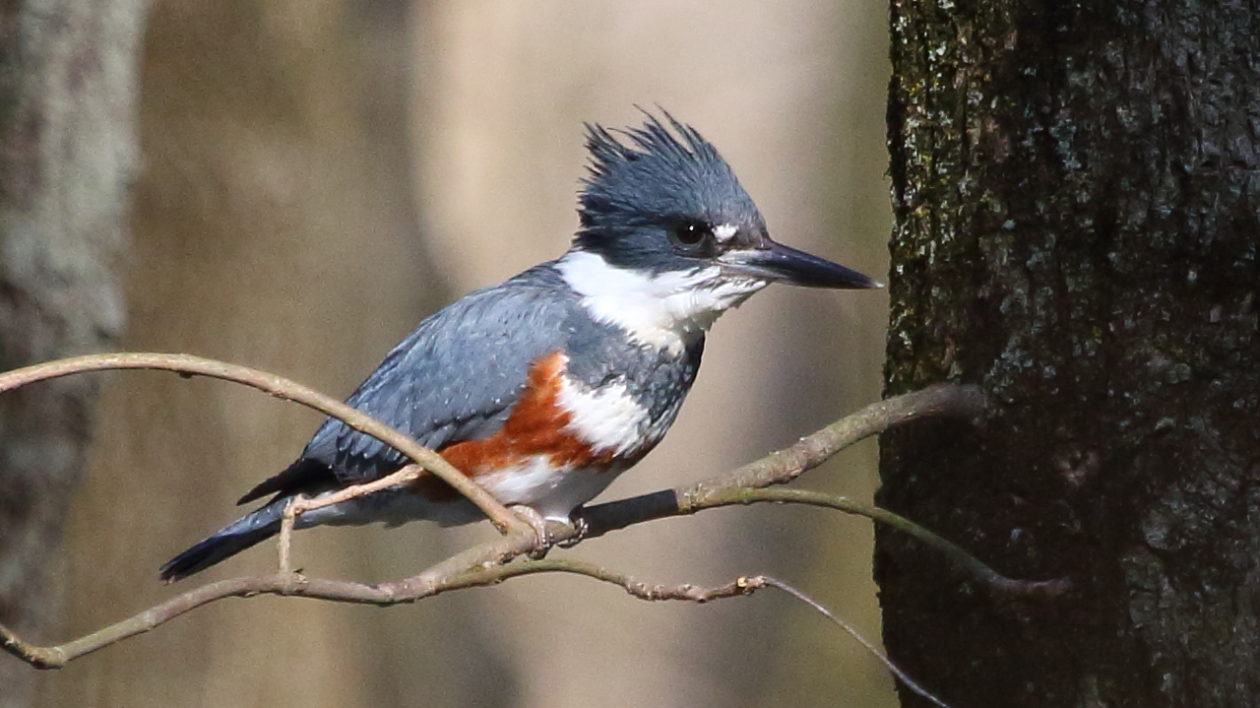
Green kingfisher is more abundant in Central and South America, but the species can be located in the southwestern reaches of the United States from Arizona to Texas. This is one of the species that will dig nesting burrows, upwards of 3 feet deep, into riverbanks. They are about half the size of belted kingfishers but sport an especially massive bill.
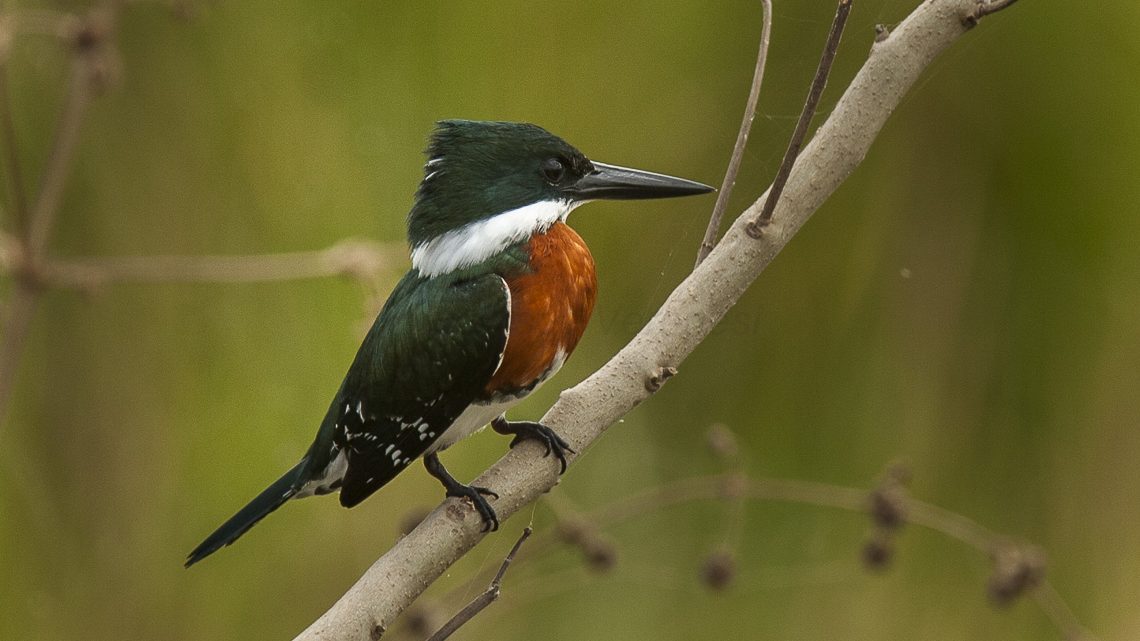
Central & South America
Ringed kingfisher has an extensive range in Central and South America, but the species does extend into the southern tip of the United States in the lower Rio Grande Valley of Texas. The species has slowing been expanding range in Texas since the 1960s. Ringed kingfishers inhabit both fresh and saltwater environments.
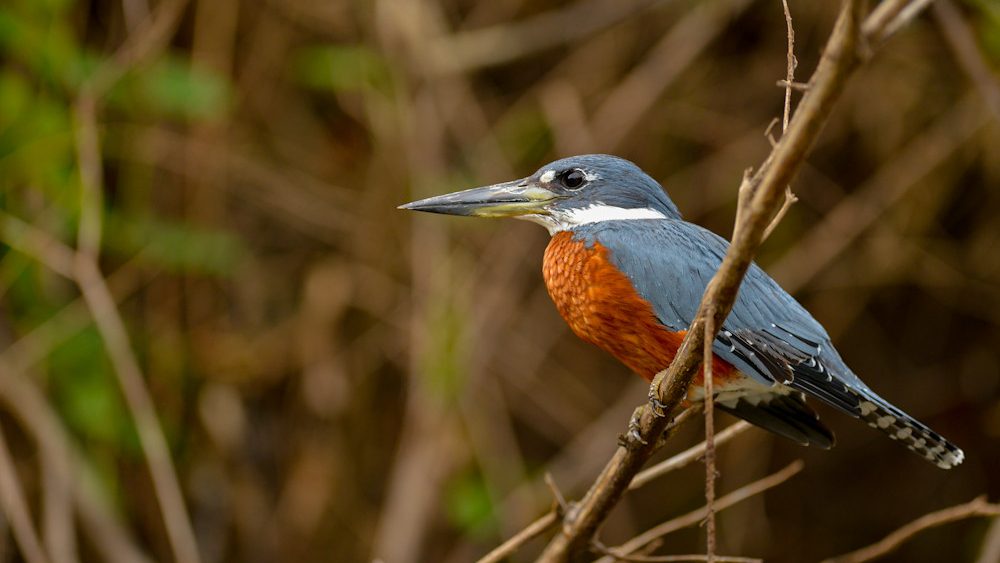
Amazon kingfisher is a larger version of the green kingfisher. Like the other kingfishers of the Americas, this species is classified in the Cerylinae or water kingfisher subfamily. These birds often hover in place before diving after aquatic prey. In addition to fish, they will consume amphibians, reptiles, and invertebrates like crustaceans and insects.

Europe
Common kingfisher is a member of the Alcedininae or river kingfisher subfamily. This group is collectively referred to as pygmy kingfishers. These iridescent beauties are the only species of kingfisher found in much of Europe. They are also numerous in northern Africa and southern Asia to Indonesia and Papua New Guinea.
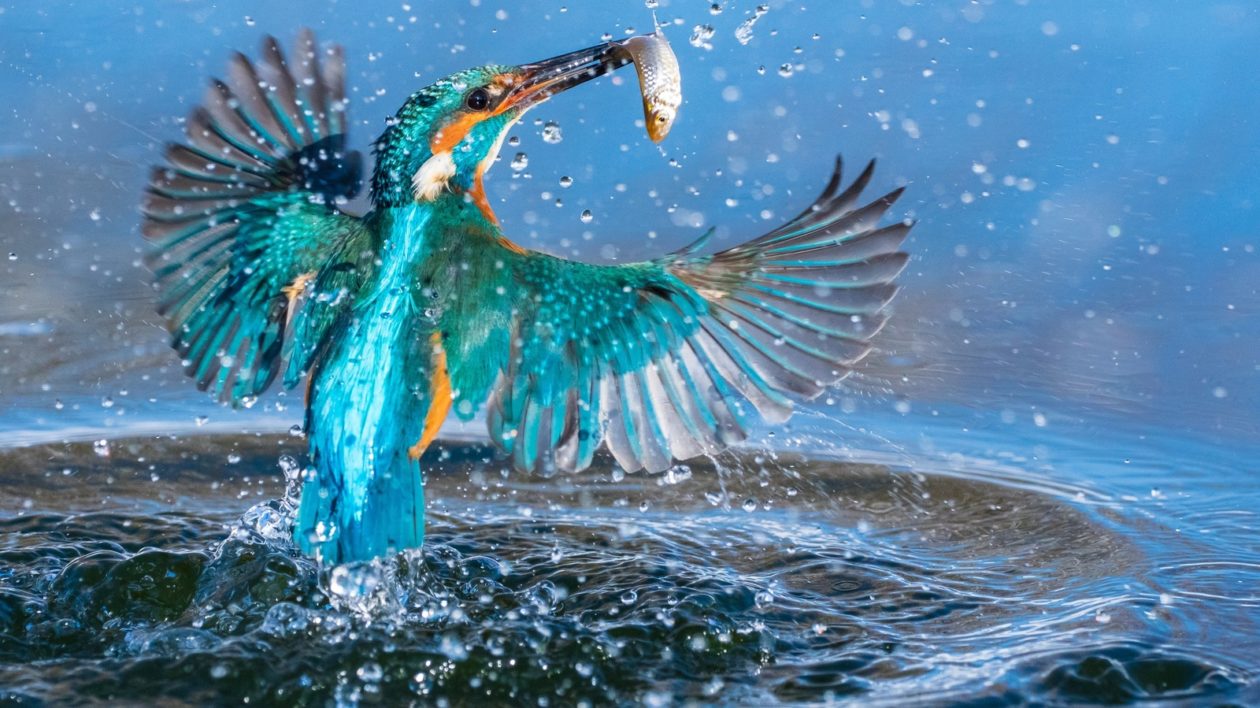
White-throated kingfisher is widespread in Asia with a range that stretches to eastern Europe. White-throateds have varied diets, and like many other kingfisher species, they will regurgitate pellets of undigested matter. White-throated kingfishers have been seen from sea level to nearly 7,500 feet up in elevation.
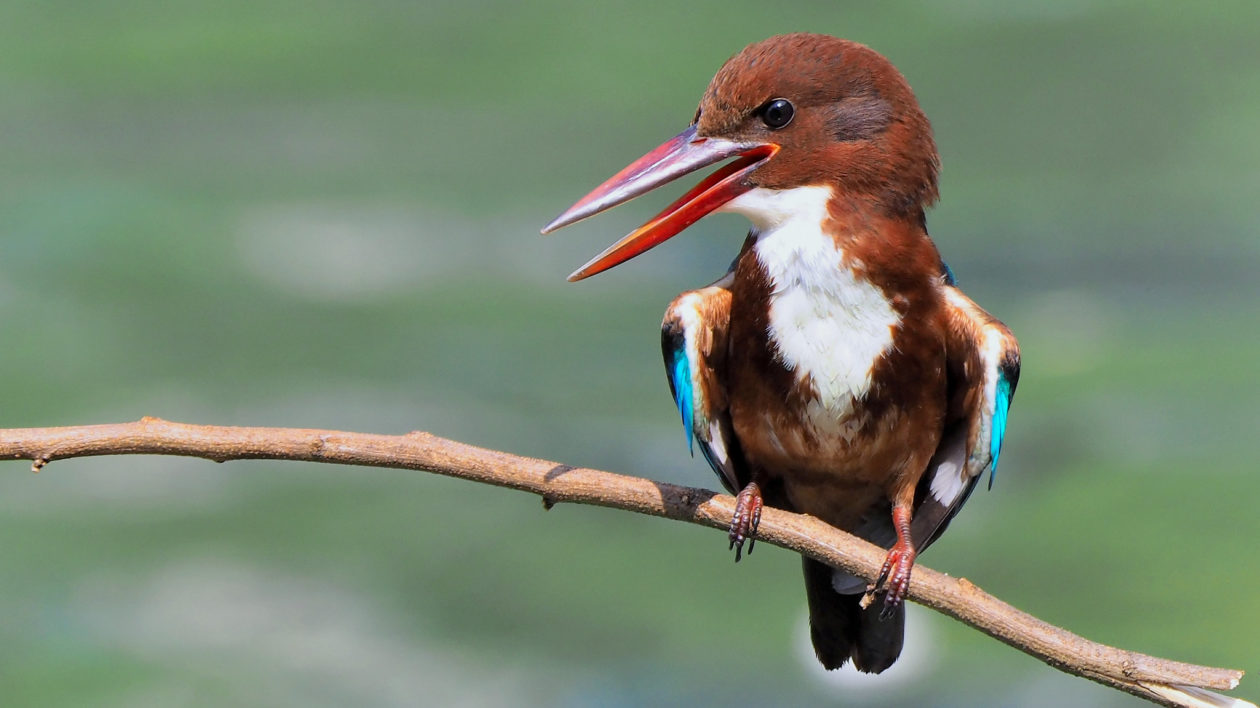
Asia
Banded kingfishers are located in the global hotbed of kingfisher diversity, Southeast Asia. Male and female plumage is different in a number of kingfisher species, but banded take this sexual dimorphism to the extreme. In a few types of kingfishers, the females are more elaborately plumaged, but for bandeds, males are more ornate.
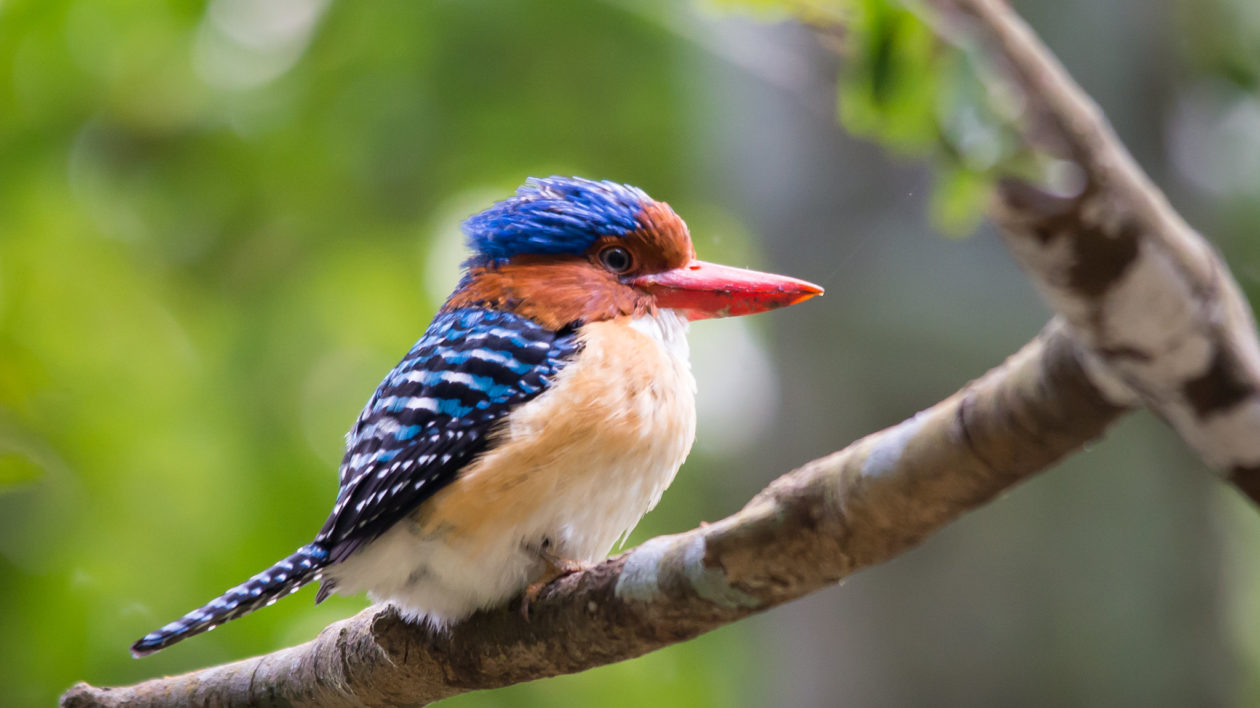
Black-backed dwarf-kingfisher is the smallest kingfisher, but it is impossible to overlook this brilliantly bright bird. The warbler-sized species is found in lowland forest habitat pockets from India to Indonesia. It has a wide-ranging diet including geckos, crustaceans, amphibians, and invertebrates.
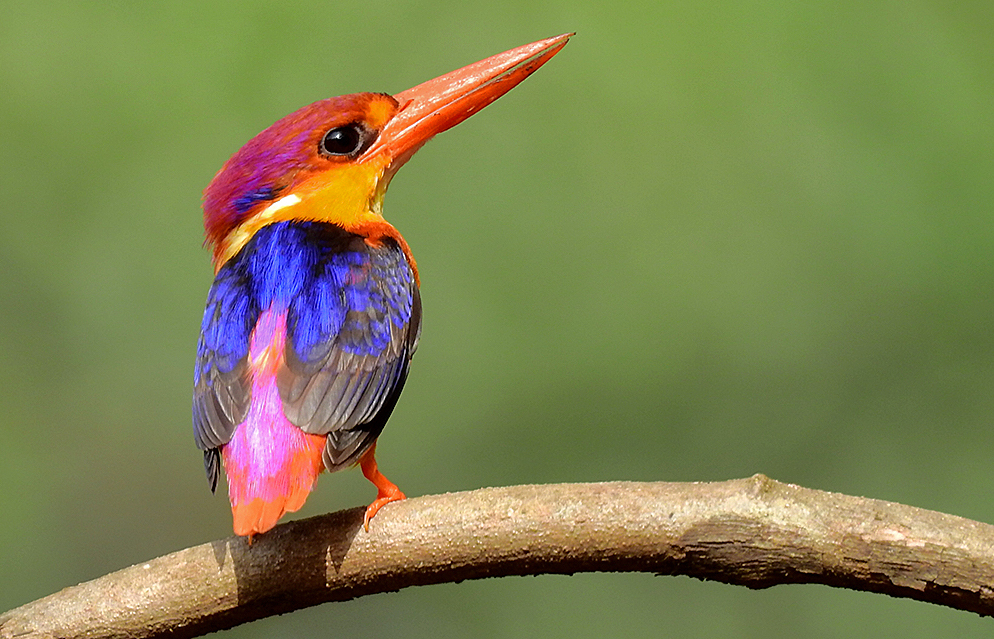
Australia
The laughing kookaburra is perhaps the most famous of the kingfishers, and at roughly crow-sized, is one of the largest. Kookaburras are in the most diverse subfamily the Halcyoninae or tree kingfishers. The rapid-fire staccato call of the laughing kookaburra is especially enthusiastic, but many other species rattle off similar territorial notes. Kookaburras can be locally abundant in city parks and open woodlands in eastern and southwestern Australia where they feed on both aquatic and terrestrial prey including fish, lizards, snakes, birds, and small mammals.
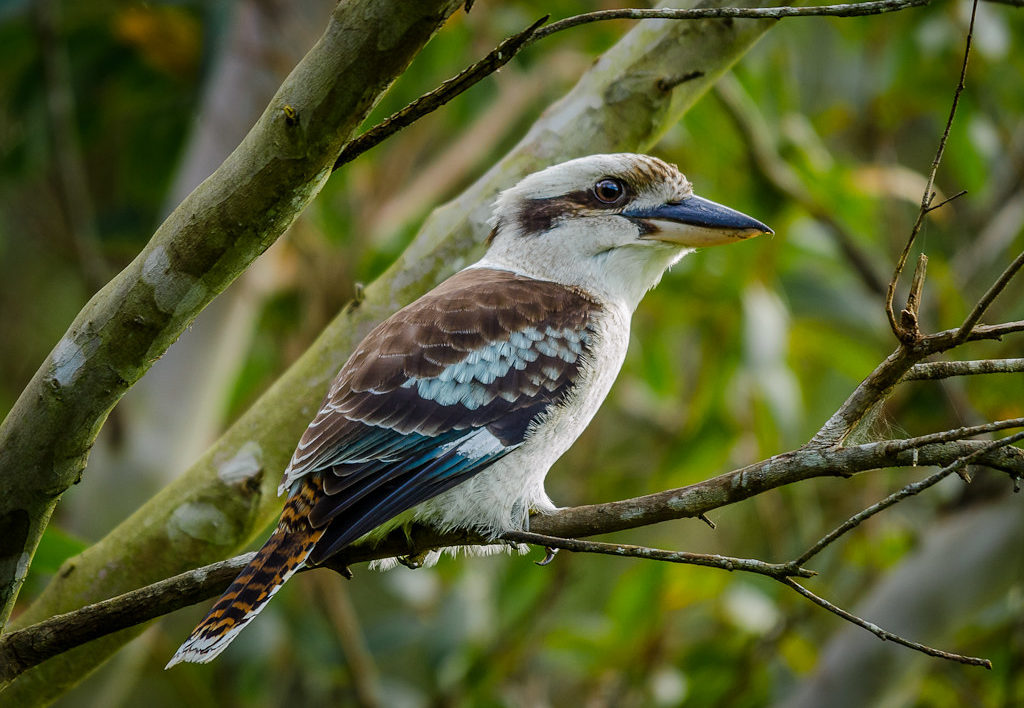
Buff-breasted paradise-kingfishers are found along the northern Australian coast and on the island of New Guinea. Nesting occurs within termite mound burrows excavated with their bright orange bills. These birds forage on the ground or in the forest canopy dining on invertebrates and small reptiles and amphibians. Difficult to see despite strong coloration, the long white tail streamers are commonly flicked up and down revealing the presence of perched birds.

Africa
Striped kingfisher is a species open savanna and thorn scrublands. Insects, especially grasshoppers, are a preferred food source. Like other kingfishers, this species hunts from a perch, captures prey, and often returns to the perch to pummel the morsel on the branch before consuming it.
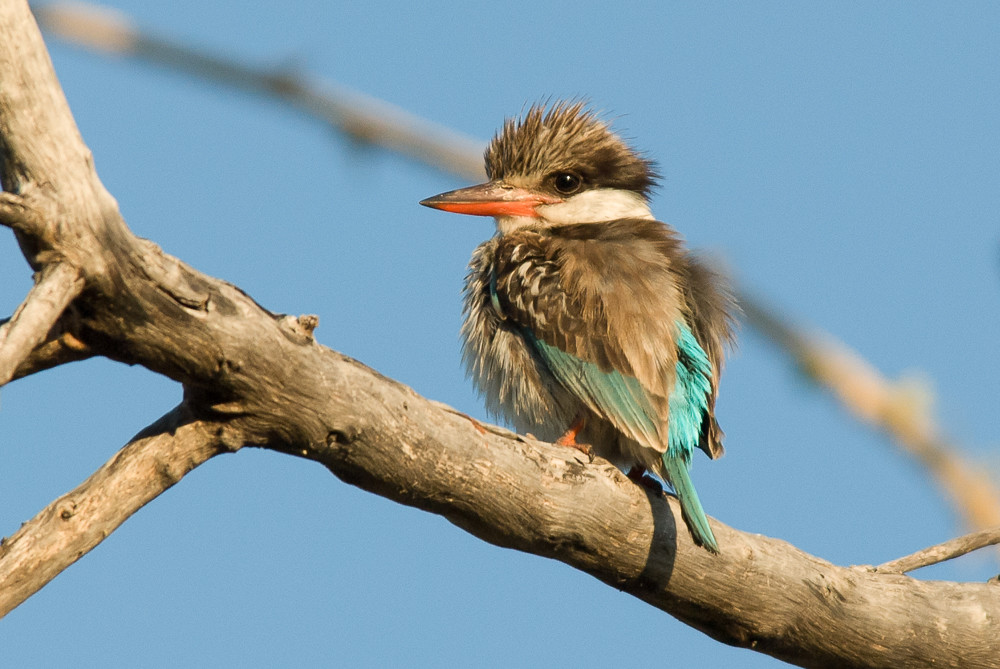
Pied kingfisher is an especially widespread species found from Cape Town, South Africa, to Beijing, China. It is the most pelagic species with a diet heavy in fish. Pied kingfishers hover over open water, plunging down to take prey that they then eat on the wing. Many kingfishers are quite territorial, but this species is notably gregarious, returning to overnight roosts that contain numerous birds.
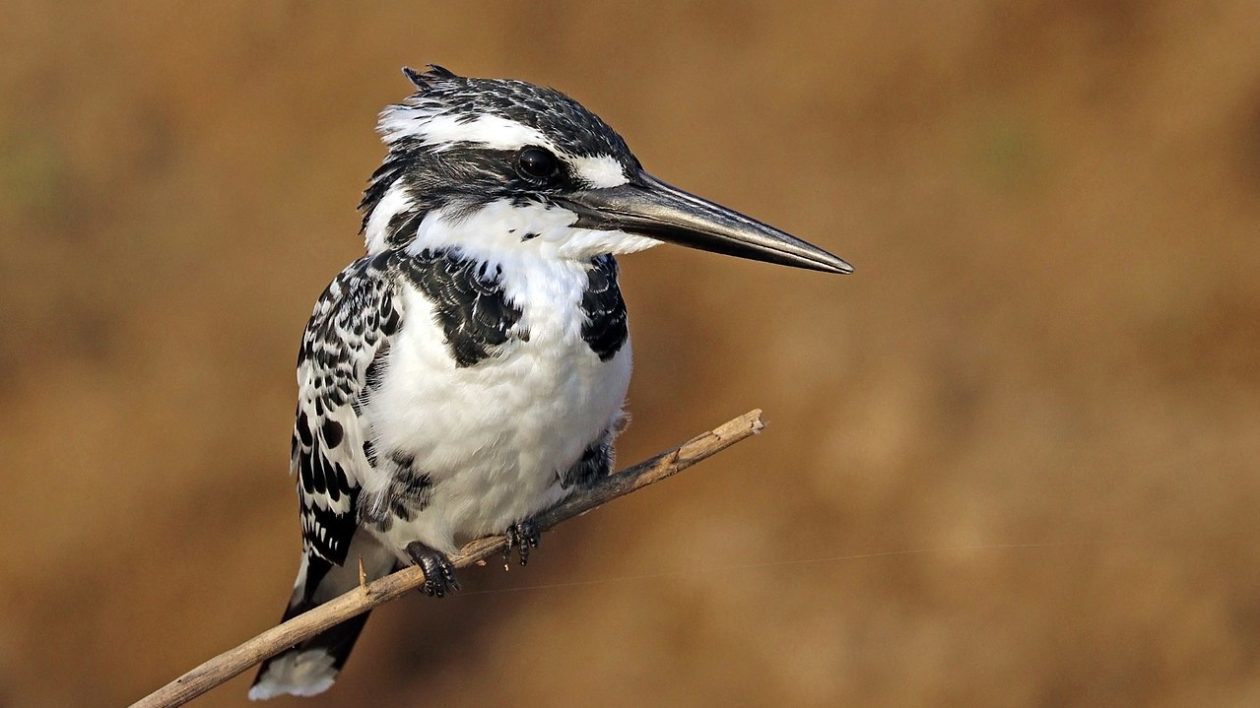
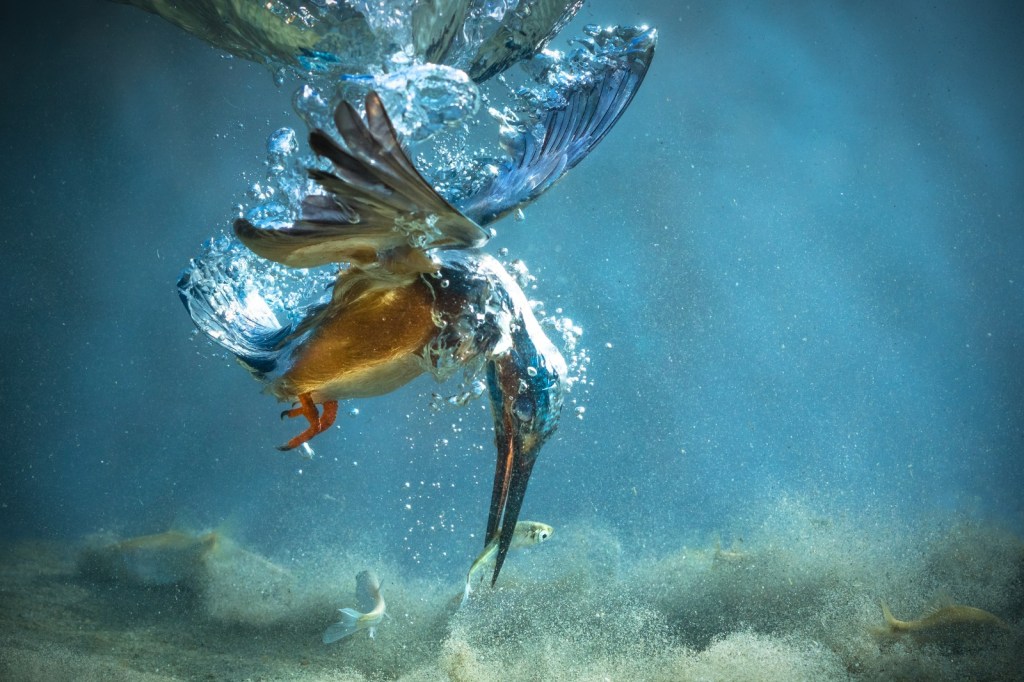



The first shot is a tank shot,a set up employed by photographers who put their picture ahead of the welfare of the bird and the fish. Kingfishers can die in these setups as they can’t see the glass and can crash into it. Please remove the tank shot. They should not be shared or encouraged
Love all these kingfishers. Did you know the Sacred Kingfisher or Kotare lives in New Zealand?
Awesome photos!
Cute, button shaped. Their beak is just about the biggest thing on them. I am familiar with Kingfisher’s.
What a fabulous variety of kingfisher species there are. The amazing world of bird life. I just hope we can protect them.
My best and good birding,
Craig